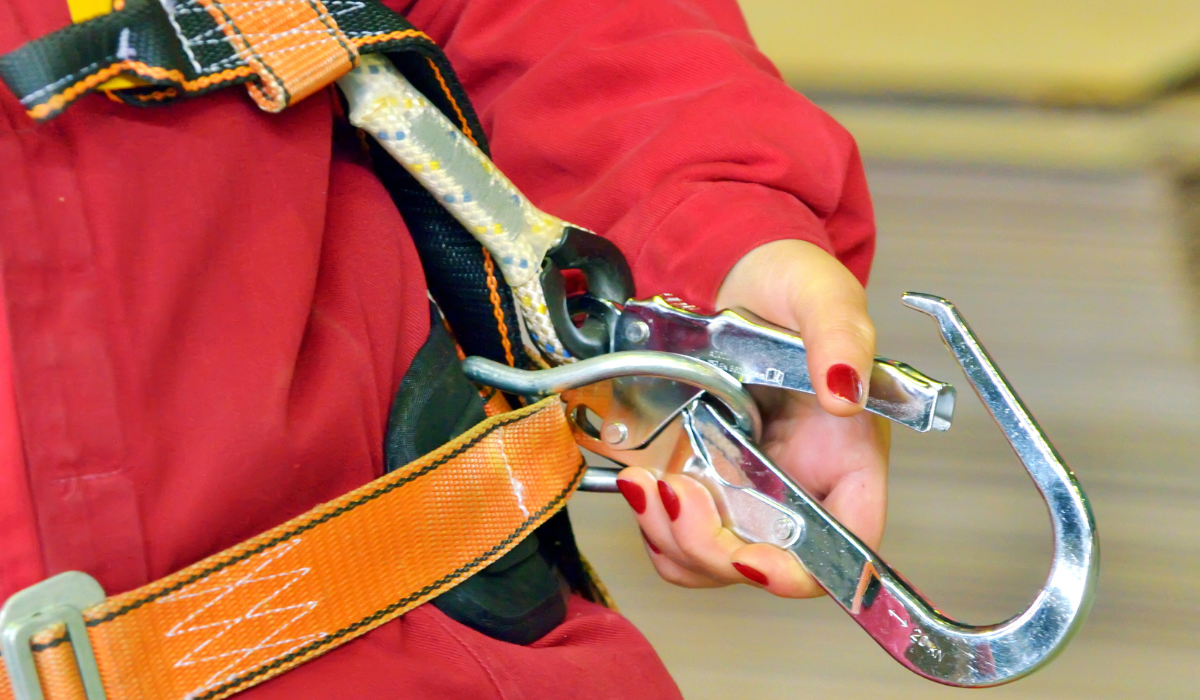Ensuring the safety of workers is a paramount concern in every workplace, with one of the most critical aspects being fall prevention. In fact, when it comes to OSHA violations, Fall Protection (General Requirements) remains at the top of the list for the 13th year in a row.
Falls are a leading cause of occupational injuries and fatalities, emphasizing the need for robust protective measures.
Workplace falls are caused by a combination of factors, often stemming from inadequate safety measures and environmental conditions. Uneven surfaces, slippery floors, and poorly maintained work areas contribute to the risk of slips and trips.
Working at elevated heights without proper fall protection, such as guardrails or harnesses, is a significant factor, particularly in industries like construction and maintenance. Additionally, lack of proper training, awareness, or adherence to safety protocols can also play a role, as employees may not be prepared to recognize and mitigate fall hazards.
Let’s take a look at some of the vital Personal Protective Equipment (PPE) that you’ll want to use in your jobsite for safeguarding your team against falls.
Related Article: OSHA’s Top 10 Violations for 2023
Related Article: Why OSHA Seeks to Update Its PPE Standard

Understanding Fall Hazards
Before delving into the specific PPE, it’s crucial to comprehend the nature of the fall hazard. Whether working at heights on construction sites, rooftops, or elevated platforms, employees face inherent risks.
Falls can result in severe injuries, disabilities, or even fatalities, making proactive preventive measures imperative. Sadly, every year approximately 300–400 construction workers fall to their deaths, typically while working at heights on roofs, ladders, and scaffolds.
1. Head Protection
The first line of defense against falls includes head protection. Helmets and hard hats are indispensable PPE that shield workers from head injuries in case of a fall or from falling objects. Ensuring these are compliant with safety standards is essential for optimal protection.
2. Eye and Face Protection
Clear visibility is crucial for preventing falls. Safety glasses or face shields protect workers’ eyes from debris, dust, or other particles that can impair vision. Unobstructed vision is key to maintaining a safe working environment, especially when navigating elevated surfaces.
3. Body Protection
Harnesses and body belts are fundamental components of fall arrest systems. When working at heights, these PPE items distribute forces across the body, minimizing the impact of a fall. Proper training on fitting and usage is vital to ensure their effectiveness.
4. Proper Footwear
Falls often occur due to slips and trips. Non-slip footwear with adequate traction is essential for preventing such accidents. The right footwear provides stability, especially when working on slippery surfaces or elevated platforms.
5. The Right Gloves
Maintaining a firm grip is crucial in fall prevention. Gloves not only protect hands from cuts and abrasions but also enhance your worker’s ability to grasp surfaces securely. As such, you’ll want to provide your team with well-fitting, quality gloves.
6. Visibility Enhancers
In some workplaces, ensuring visibility is crucial for fall prevention. High-visibility clothing with reflective elements is essential, particularly in low-light conditions. This helps workers remain visible to others, reducing the risk of accidental collisions.
7. Educate and Train on Fall Protection Strategies
Though not technically a piece of PPE, education and training go hand-in-hand with such items. PPE for fall protection is most effective when workers are well-informed about proper usage. Comprehensive education and training programs should cover the correct selection, fitting, and maintenance of fall prevention PPE.
Your team needs to understand the hazards they face and how to use protective equipment effectively.
- See OSHA Standard on Fall protection; 501
- See OSHA Standards on Fall protection; by Industry
- See OSHA Guidelines on Fall protection; Construction Standards and Resources
- See OSHA Guidelines on Fall protection; Training materials & other resources
Key Takeaways
Fall protection in the workplace is a multifaceted effort that hinges on the proper use of both the right equipment, and the right knowledge. Helmets, eye and face protection, harnesses, foot & hand protection, visibility enhancers, and education all play integral roles in creating a comprehensive fall prevention strategy.
Make sure you prioritize providing the necessary PPE, ensuring it meets safety standards, and fostering a culture of safety through education and training. By investing in the right protective measures, you can significantly reduce the incidence of falls and create a safer environment for all employees.
About Worksite Medical
In most cases, OSHA requires medical surveillance testing, and at no cost to employees.
Worksite Medical makes that program easier with mobile medical testing.
We conduct on-site respirator fit tests, as well as audiometric exams, pulmonary function tests and heavy metal lab work, right on your job site. We also keep accurate, easy-to-access medical records for your convenience. You’ll keep your employees at work, and stay ahead of OSHA inspections.




